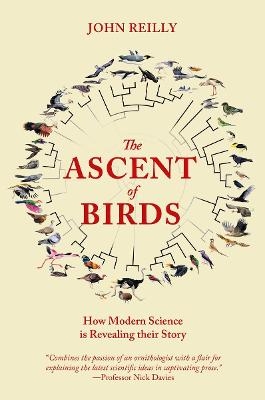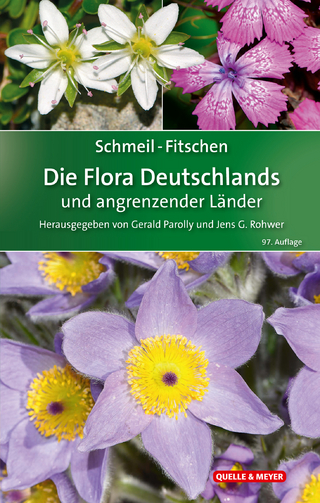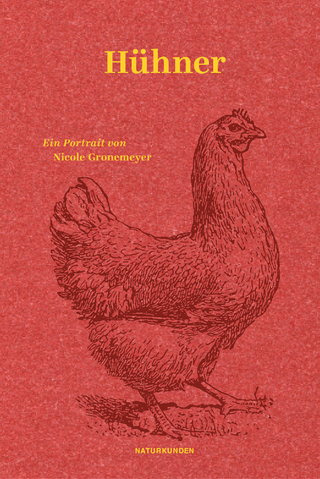
The Ascent of Birds
Pelagic Publishing (Verlag)
978-1-78427-169-5 (ISBN)
- Titel ist leider vergriffen;
keine Neuauflage - Artikel merken
When and where did the ancestors of modern birds evolve? What enabled them to survive the meteoric impact that wiped out the dinosaurs? How did these early birds spread across the globe and give rise to the 10,600-plus species we recognise today ― from the largest ratites to the smallest hummingbirds? Based on the latest scientific discoveries and enriched by personal observations, The Ascent of Birds sets out to answer these fundamental questions.
The Ascent of Birds is divided into self-contained chapters, or stories, that collectively encompass the evolution of modern birds from their origins in Gondwana, over 100 million years ago, to the present day. The stories are arranged in chronological order, from tinamous to tanagers, and describe the many dispersal and speciation events that underpin the world's 10,600-plus species. Although each chapter is spearheaded by a named bird and focuses on a specific evolutionary mechanism, the narrative will often explore the relevance of such events and processes to evolution in general.
The book starts with The Tinamou’s Story, which explains the presence of flightless birds in South America, Africa, and Australasia, and dispels the cherished role of continental drift as an explanation for their biogeography. It also introduces the concept of neoteny, an evolutionary trick that enabled dinosaurs to become birds and humans to conquer the planet.
The Vegavis's Story explores the evidence for a Cretaceous origin of modern birds and why they were able to survive the asteroid collision that saw the demise not only of dinosaurs but of up to three-quarters of all species.
The Duck's Story switches to sex: why have so few species retained the ancestral copulatory organ? Or, put another way, why do most birds exhibit the paradoxical phenomenon of penis loss, despite all species requiring internal fertilisation?
The Hoatzin's Story reveals unexpected oceanic rafting from Africa to South America: a stranger-than-fiction means of dispersal that is now thought to account for the presence of other South American vertebrates, including geckos and monkeys.
The latest theories underpinning speciation are also explored. The Manakin’s Story, for example, reveals how South America’s extraordinarily rich avifauna has been shaped by past geological, oceanographic and climatic changes, while The Storm-Petrel’s Story examines how species can evolve from an ancestral population despite inhabiting the same geographical area. The thorny issue of what constitutes a species is discussed in The Albatross's Story, while The Penguin’s Story explores the effects of environment on phenotype ― in the case of the Emperor penguin, the harshest on the planet.
Recent genomic advances have given scientists novel approaches to explore the distant past and have revealed many unexpected journeys, including the unique overland dispersal of an early suboscine from Asia to South America (The Sapayoa’s Story) and the blackbird's ancestral sweepstake dispersals across the Atlantic (The Thrush’s Story).
Additional vignettes update more familiar concepts that encourage speciation: sexual selection (The Bird-of-Paradise's Story); extended phenotypes (The Bowerbird's Story); hybridisation (The Sparrow's Story); and 'great speciators' (The White-eye's Story). Finally, the book explores the raft of recent publications that help explain the evolution of cognitive skills (The Crow's Story); plumage colouration (The Starling's Story); and birdsong (The Finch's Story)
Professor John Reilly has been a keen birder all his life, visiting over fifty countries and observing nearly half the world's bird species. In the late 1970s, he led several pioneering bird and wildlife tours to the Arctic island of Spitsbergen. Since developing an interest in avian evolution, he has concentrated on tracking down and photographing species that have important evolutionary stories to tell, birds that provide the key characters for each of the book's chapters. After graduating in biochemistry and then medicine, John worked as a consultant haematologist in Sheffield for 25 years. In addition to teaching, lecturing and clinical work, he led an active research programme into the causes and treatment of various blood cancers, authoring over 200 scientific articles in peer-reviewed journals. John's medical and scientific career, and time spent as a bird guide, enable him to present complex scientific concepts to the non-specialist - whether in the field of leukaemia or the evolution of birds. In 2014, he retired from the NHS to concentrate on travelling and writing. This career change was encouraged by the success of his first book, Greetings from Spitsbergen: Tourists at the Eternal Ice (2009) published by Tapir Academic Press. In 2013 he established Svalbard Press, with the aim of publishing the histories of different countries as revealed by their early postcards. The first volume in the series, Spitsbergen's Early Postcards: an annotated catalogue, was published in 2014. Further volumes on Papua New Guinea and Greenland are in preparation.
Acknowledgements
List of Illustrations
Timeline
- Geological Ages
- Prologue: Evolution of an Idea
PART ONE: NON-PASSERINES
1. The Tinamou's Story: Death of a Paradigm
2. The Vegavis's Story: The Cradle of Modern Birds
3. The Waterfowl's Story: Refugia, High Living, and Sex
4. The Hoatzin's Story: An Improbable Voyage
5. The Penguin's Story: Phenotype and Environment
6. The Storm Petrel's Story: Sympatry versus Allopatry
7. The Albatross's Story: The Species Problem
8. The Godwit's Story:Quantum Compasses
9. The Buzzard's Story: Accidental Speciation
10. The Owl's Story: Nightlife
11. The Oilbird's Story: Evolutionary Distinctiveness
12. The Hummingbird's Story: A Route of Evanescence
13. The Parrot's Story: Vicariance and Dispersal
PART TWO: PASSERINES
14. The New Zealand Wren's Story: A Novel Foot
15. The Manakin's Story: Why so many Suboscines?
16. The Sapayoa's Story: Odd One Out
17. The Scrubbird's Story: Where Song Began
18. The Bowerbird's Story: Extended Phenotypes
19. The Crows' Story: Cognitive Skills
20. The Bird of Paradise's Story: Sexual Selection
21. The Starling's Story: Structural Colours
22. The Thrush's Story: Sweepstake Dispersals
23. The Sparrow's Story: Hybridisation and Speciation
24. The Zebra Finch's Story: Evolution of Birdsong
25. The Crossbill's Story: Adaptive Radiation and Coevolution
26. The White-eye's Story: Supertramps and Great Speciators
27. The Tanager's Story: A Final Flourish
Postscript: The Sixth Extinction
Appendix 1: Glossary
Dramatis Personae
Bibliography
Index
| Erscheinungsdatum | 14.06.2018 |
|---|---|
| Reihe/Serie | Pelagic Monographs |
| Zusatzinfo | 1 Tables, black and white; 37 Plates, color; 36 Illustrations, black and white |
| Verlagsort | Exeter |
| Sprache | englisch |
| Maße | 156 x 234 mm |
| Gewicht | 750 g |
| Themenwelt | Sachbuch/Ratgeber ► Natur / Technik ► Naturführer |
| Naturwissenschaften ► Biologie ► Evolution | |
| Naturwissenschaften ► Biologie ► Zoologie | |
| Naturwissenschaften ► Geowissenschaften ► Geografie / Kartografie | |
| ISBN-10 | 1-78427-169-1 / 1784271691 |
| ISBN-13 | 978-1-78427-169-5 / 9781784271695 |
| Zustand | Neuware |
| Informationen gemäß Produktsicherheitsverordnung (GPSR) | |
| Haben Sie eine Frage zum Produkt? |
aus dem Bereich


